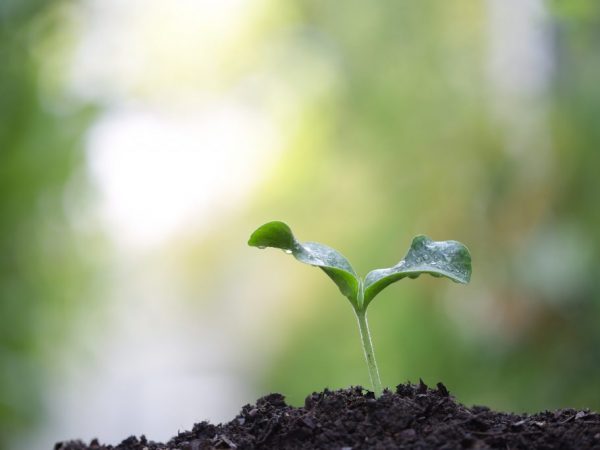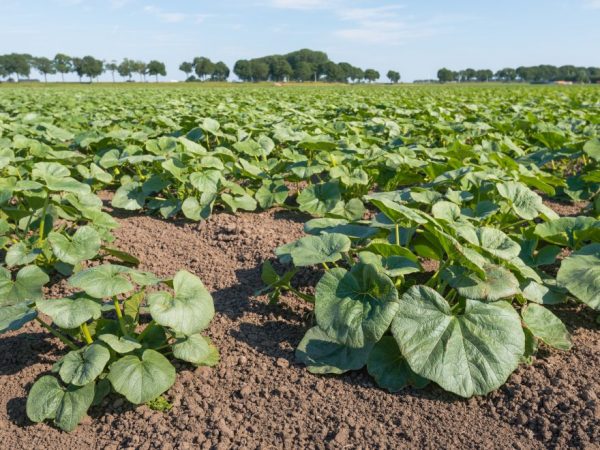Pumpkin variety Sweetie
Pumpkin "Sweetie" stands out for its large size and gastronomic qualities. The main industrial use of this variety is the production of juices and baby food. Summer residents are grown for the preparation of first and second courses and are used as one of the ingredients in baked goods and desserts.

Pumpkin variety Sweetie
Characteristics of the variety
Pumpkin variety "Sweetie f1" was bred in the process of selection work for cultivation in non-chernozem regions.
It belongs to the mid-season and is distinguished by large fruits, which grow on average weighing up to 1.5-3.0 kg. On one pumpkin whip, reaching a length of up to 1.5 m, about 6-8 ovaries are formed.
During the ripening process, the bark of the pumpkin acquires a contrasting orange color. The bark is dense and segmented.
The pulp, by its gastronomic properties, is juicy and sweet, has a reddish tint and a soft structure. Fills the entire cavity of the vegetable and contains large seeds.
Varietal advantages
Among the advantages of this variety is the increased proportion of sugar in the vegetable. The variety is endowed with the title of the sweetest among the early ripening varieties. Also, this pumpkin contains a large amount of carotene and vitamin C, sodium, magnesium, phosphorus.
Ripens in 4 months from the moment of the first germination to harvest. It tolerates low temperatures well and is quite drought tolerant.
The dense bark allows for transportation without loss of appearance characteristics and provides an extended shelf life.
Varietal disadvantages
According to the description of the variety, Sweetie is demanding on the fertility of the soil, which some summer residents attribute to the shortcomings of pumpkin. Among other disadvantages - light-loving and heat-loving.
How to grow a pumpkin
This variety is grown by seedless and seedling methods.
Landing area preparation
Places where sunlight hits are suitable for planting. The optimal choice is the southern direction (in the absence of other vegetation and buildings that could create shade).
Suitable soils for the variety are weak and medium loamy, as well as sandy loam with neutral acidity. An important condition is organic fertilization.
A large pumpkin requires sufficient planting space. The minimum size of the planting area for each vegetable is at least 1 m². with a gap between the rows of at least 0.8-0.9 m.
You can plant on a bulk bed and in a greenhouse.
If it is impossible to provide fertile soil, the soil is additionally fertilized immediately before planting a vegetable crop, for which 1-2 tbsp is added to the formed holes. wood ash and about 50 g of superphosphate.
Germination of seedlings

Only healthy seeds are suitable for germination
In regions with unfavorable conditions, where the spring warmth comes with a delay, cultivation is carried out only by seedling in a greenhouse or at home and the subsequent movement of the sprouted shoots into the soil warmed up by the sun.
For germination, only intact pumpkin seeds that do not have dark spots on the surface are suitable, which are previously disinfected in a saline solution (2 tablespoons per 100 ml) for half an hour.
The initially selected seeds in a container filled with a small amount of room temperature water are placed in a warm place. In this case, they are located at a sufficient distance from the heat source to avoid overheating.
For planting soaked seeds, containers are prepared, which are often used as plastic bottles or glasses cut to length. Height - at least 8 cm.
Seeds sprouted in water are placed in the substrate 3-4 cm. Containers are placed on disposable plates or trays.
A ready-made mixture or one prepared independently from peat, sand and turf (in equal parts) is suitable as a substrate.
Planting seedlings in open soil occurs after 25-30 days after planting the seeds, when 2-3 leaves appear. The temperature must be at least 13 ° C.
Landing in open ground
In regions with a warm climate, pumpkin seeds "Sweetie" are planted directly into open soil.
For open growing conditions, select the largest, without mechanical defects. They are tested for germination:
- wrapped in a damp cloth;
- put in a warm place for a day.
High-quality seed material germinates in 24 hours. It is hardened in the refrigerator for 2 days and then sown in open soil.
Landing is planned for the first half of May. In the soil, holes are formed to a depth of 8 cm, placing 3-4 pumpkin seeds in each, maintaining the required distance between holes and rows.
How to care
In the process of caring for the sprouts that have emerged from the seeds, the excess shoots are cut off, leaving only 1 sprout in each hole. In this case, the shoots are not pulled out, but cut off, because by the time stable seedlings are formed, the roots have time to intertwine with each other.
Further care includes a set of standard measures: loosening and removing weeds, feeding and watering.
Loosening and removing weeds
Loosening of the soil is carried out until the moment when the foliage begins to close. At the same time, the emerging weeds are removed, which draws off mineral nutrition.
Top dressing

Top dressing will increase the productivity of plants
The variety requires organic matter, which provides the vegetable crop with rapid ripening and active fruiting. For this purpose, gardeners often use:
- chicken droppings, diluting it initially in water in a ratio of 1:10, and then leaving it to ferment for 7 days; the fermented mixture is again diluted with water in a ratio of 1:20 and applied under pumpkin bushes, 2 liters per plant;
- mineral nitrofoskoy, which is mixed with water at the rate of 10 grams per 10 liters and pouring 2 liters of ready-made working solution per plant under pumpkin bushes.
Fertilization stages:
- the first fertilizing feeding is carried out when the fifth leaf is formed on the pumpkin bush;
- the second fertilization is due to the active formation of lashes;
- each subsequent fertilizing is carried out at intervals of 20 days.
At the stage of active fruiting, a glass of wood ash can be added to the main fertilizer complex once.
Watering
For the pumpkin variety Sweetie, regular watering is required, which is carried out as the soil dries. The optimum water temperature for irrigation is 20 ° C - 22 ° C.
The amount of watering is increased to 30 liters per plant at the flowering stage.
Forming pumpkin whips
In the process of proper care of the Candy, with the correct formation of the lashes, large fruits are obtained, becausethis process ensures maximum supply of mineral nutrition.
Wherein:
- pinch the top, leaving 0.7 m of shoots on the sides, when the lash grows in length about 1.5 m;
- shoots at a distance of 0.5 m from the main stem are pressed to the surface of the earth and sprinkled with soil, which will further ensure the formation of new roots through which mineral nutrition will flow.
When to harvest and how to store it
Ripe Candy is harvested in dry and warm weather, which ensures its long-term storage. During the harvesting process, the preservation of the stalk is monitored in order to prevent early spoilage of vegetables and their unsuitability for human consumption.
A mid-season variety usually ripens within 115-140 days from the moment the first shoots appear.
The main signs will tell you about the readiness of the crop:
- roughness and roughness of the peduncle;
- yellowed and dried leaves and stems;
- coarsening of the pumpkin peel and the acquisition of a characteristic pattern for the type of ornament.
The harvested crop is stored in a dry and well-ventilated area. Can also be stored in the refrigerator.
Vegetables can be stored for 8-10 months if:
- choose for storage undamaged fruits, without cracks, dents and other mechanical flaws;
- leave the stalk at a level of 6-10 cm when collecting;
- from the moment of collection before laying for storage and during its process, do not wash vegetables;
- fold the pumpkins to be stored in one layer, on an unstable surface, avoiding contact with each other;
- maintain the temperature in the room at the level of 8 ° C - 10 ° C, and the humidity at the level of 70-80%.
Disease susceptibility
Pumpkin variety "Sweetie" is susceptible to a number of diseases and pests.
- spider mite - plantings are sprayed with onion infusion against it. Made from husk (60 g per 100 ml);
- powdery mildew - in the fight against it, the pumpkin is treated with a solution of potassium permanganate (3 g per 10 l) or copper sulfate (2 g per 10 l), at the stage of the disease they are sprayed with Bordeaux liquid with a concentration of 1%;
- melon aphid - from a pest attack, plants are treated with soapy water (200 g per 10 l) or karbofos (60 g per 10 l);
- fruit rot - in case of a disease, the affected areas are removed, followed by treatment of the resulting wound with aloe juice.
Diseases appear mainly at the stage of ovary and fruit formation. The main preventive measure is strict observance of crop rotation (3-4 years).

